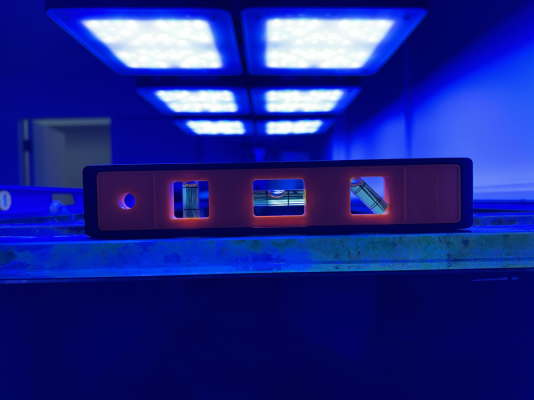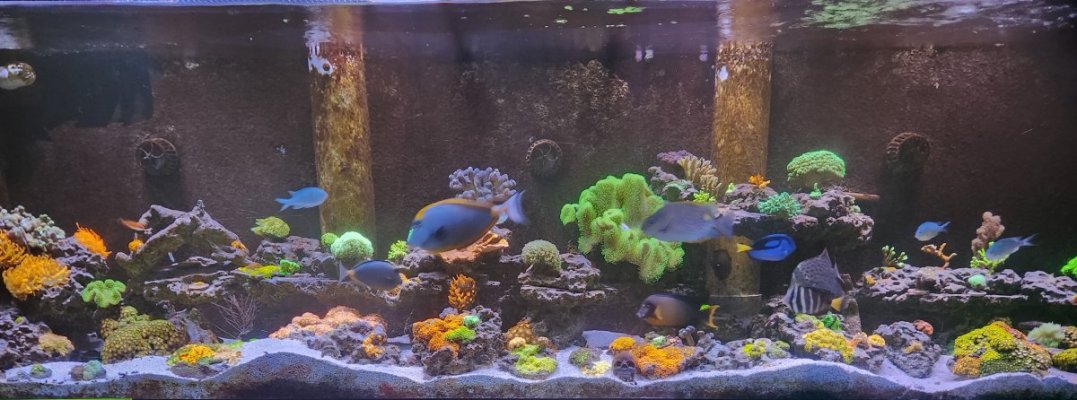What sizes? And who built them?
Seapora 180 and an Aqueon 210.
Admittedly, they have plastic frames, top and bottom, but still completely reliable over the years.
Follow along with the video below to see how to install our site as a web app on your home screen.
Note: This feature may not be available in some browsers.
What sizes? And who built them?
Yep, it's going to blow. I have spent this week making plans, finding a new tank builder, and generally panicking.
I am uninterested in starting some sort of war by sharing my experiences with this most famous of tank builders. He is taken no responsibility and blamed this outcome on everything but himself. In 2020, he even moved and relocated his entire shop while building my tank, but none of these problems could have been created on his end.
My architect and builder repeatedly requested requirements for stands and email responses were not specific at all. For the stand top he listed a variety of things we could use and then said "whatever surface you use make sure it is perfectly flat." But now, according to the manufacturer I have used the wrong top too.
Apparently, my stand is the cause of all my problems so here are pics of my problematic stand. The shadow makes it hard to photograph, but the stand steel is straight across without gaps.





He also said that the display can appear to be level but the stand may not be level. The level on the short end is a little off now, but I didn't clean up there before placing it. I'm 100% sure the tank was initially 100% level. I remember checking it periodically. Isn't the foam there to make even minute differences less impactful to the display?
This tank has other problems, like aberrations that make objects look slightly curved and low spots all over the viewing pane. I've never had a tank with glass flaws either, but that's normal, right? According to the builder that is to be expected! The top overflow brace is wiggling too and the silicone is also cracked. My tank before this was 6ft and was flawless.
He momentarily stopped the blame game when he found out I was replacing the whole system and finally asked, how can I help?
Anyway, due to the leak I have been asking and reading a lot more about tank manufacturer's warranties. This builder only warranties their tanks for 2 years on their stands and 1 year not on their stands. Other builder's warranty their work 5, 10, 15 years. Maybe that's a sign. Beware people.
Not to sound combative, but one persons experience =/= reality.Completely not true. In my 40 years in the hobby, glass tanks are all I have ever owned. They have NEVER leaked.
Completely not true. In my 40 years in the hobby, glass tanks are all I have ever owned. They have NEVER leaked.
Seapora 180 and an Aqueon 210.
Admittedly, they have plastic frames, top and bottom, but still completely reliable over the years.
Not sure about Seapora, but the Aqueon is not 40 years old. Company name dates only to the early 2000s (acquisition of AGA by Central was in 2000, but I recall the name change was not immediate).
Also, as mentioned, N=2 isn't really a data set.
It is a nightmare!What a nightmare this must be. Based on what I see in the pictures, this is clearly a build quality issue, and not a an unleveled stand.
I would suggest getting a pair of 2x4s and running one along the bottom front and the other bottom back. Then use 4 long pipe clamps to hold the bottom together until you get a solution in place. It will reduce your stress/panic level.
Planet Aquariums consists of a Master Designer and a Master Builder from OCEANIC. I have a 96x24x31 Oceanic that is about 30 years old, so there are glass tanks that don't leak. From my limited experience owning about 7 Oceanic Tanks, I probably would look no farther than Planet if I was going to buy new.Any feedback on Midwest Aquariums, Tenecor, or Planet Aquariums? I am thinking about an acrylic tank... Are they really that easy to scratch?

Any idea what adhesive is used to bond glass to PVC? This is a longstanding problem in other animals-in-boxes hobbies.In fact, you might take a look at the new PVC Bottom 375g and 450g PA offers. They channel the PVC so the glass sits down inside a Grove, the structural support from this design alone is pretty incredible.
that I am not sure, but the premier LFS in Omaha has a pvc bottom frag tank I am watching from PA. ya it is only 12 inches deep compared to the 24/36 deep on the bigger tanks but I think if adhesive was an issue it'd be an issue on them all. You might hit their website ask them, or shoot them an email.Hopefully this question isn't completely irrelevant to the OP:
Any idea what adhesive is used to bond glass to PVC? This is a longstanding problem in other animals-in-boxes hobbies.
Oh, I wasn't trying to imply that it was an issue (although the OP might not be willing to test any new engineering techniques, and I wouldn't blame them).but I think if adhesive was an issue it'd be an issue on them all.
to put it simply, yes it has changed, A LOT!! My opinion, probably wrong, but the Tempered Glass revolution killed Solid Tank design. Suddenly glass that was a lot thinner could be used which cut costs on materials by a lot. Instead of passing the savings to the consumer, tank makers got greedy and started using thinner and thinner materials until today you can search RED SEA Fail and find 25+ pages of 20+ threads about seam failures I feel is largely due to glass flex from using glass that is to thin.Has the manufacturing of glass tanks changed or is this notion all will eventually fail isolated to large tanks because back in the day knew several stores with 40 plus year old tanks and see them on YouTube these days granted mostly smaller than 55 what most stores tend to use that have been around that long. I ask because some advise is to go acrylic which I'm considering for the fact those seems are supposedly permanent and expect grandchildren might purposely or inadvertently throw objects at it. Kids will be kids.
That’s called shrinkage and unfortunately done by many industries. Thought it was the glue used due to EPA requiring something ecologically safer but now weaker.to put it simply, yes it has changed, A LOT!! My opinion, probably wrong, but the Tempered Glass revolution killed Solid Tank design. Suddenly glass that was a lot thinner could be used which cut costs on materials by a lot. Instead of passing the savings to the consumer, tank makers got greedy and started using thinner and thinner materials until today you can search RED SEA Fail and find 25+ pages of 20+ threads about seam failures I feel is largely due to glass flex from using glass that is to thin.
Unlikely. Some silicone adhesives contain very ecologically problematic components (organotin catalysts, the siloxane D4), but are permitted even in applications where they're not necessary. I'd confirm regulation history before laying the blame there.Thought it was the glue used due to EPA requiring something ecologically safer but now weaker.

